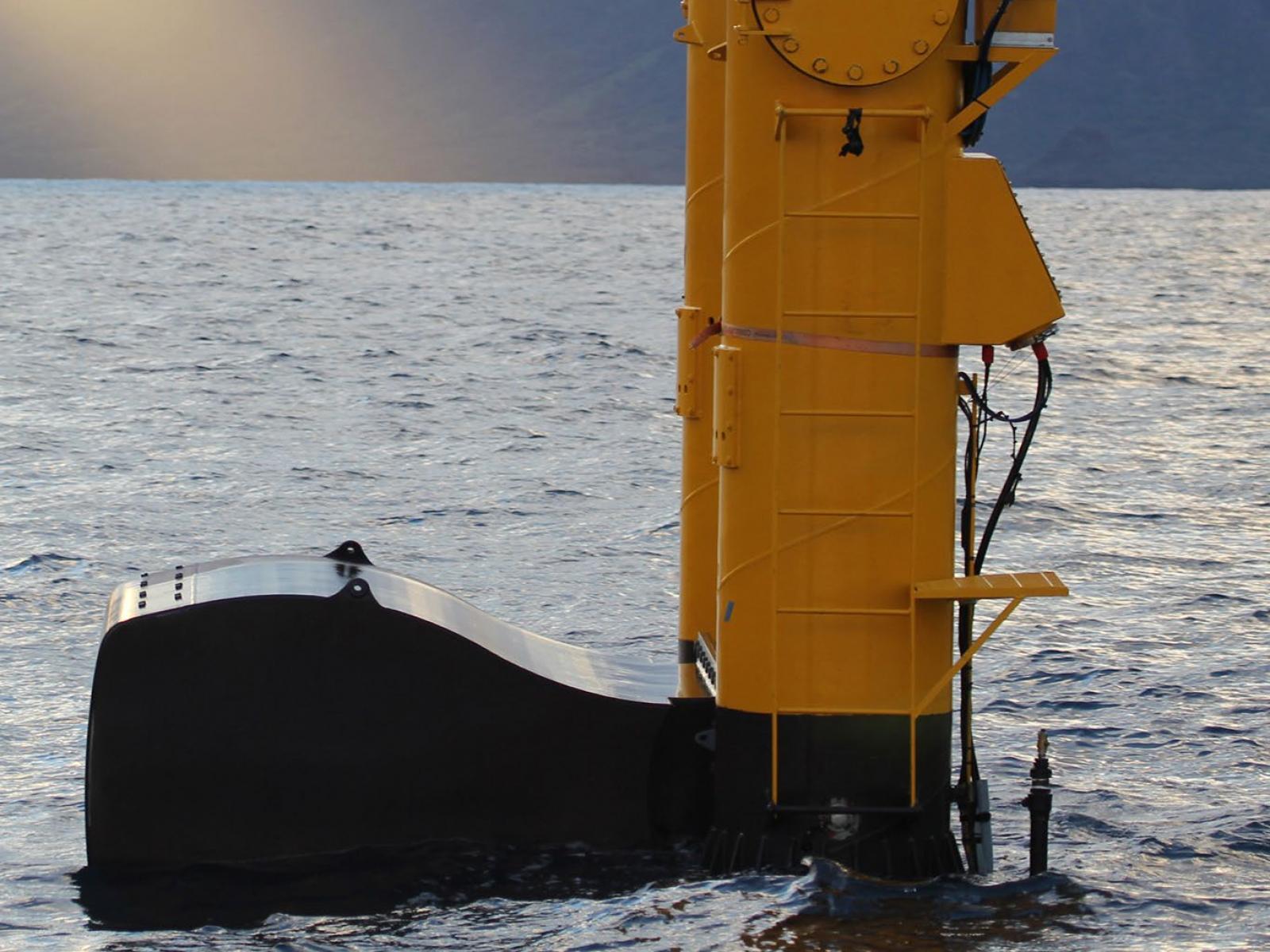Marine Test Sites
United States

PNNL has permits to use Sequim Bay and Clallam Bay as marine energy test sites to test devices such as the one pictured here
PNNL has federal authorizations and permits for research activities at two locations in the Strait of Juan de Fuca. These sites offer research conditions ranging from a quiet, low-energy environment inside Sequim Bay, to increased exposure to currents in the Sequim Bay channel, and a higher-energy wave environment in Clallam Bay.
Sequim Bay
PNNL-Sequim's location at the entrance to Sequim Bay allows direct access to sheltered bays and to high wind, wave, and tidal flow environments featuring water depths up to 100 m. The peak current speed in the adjacent channel is up to 2 m/s, and the channel has a depth of up to 12 m, which opens into a quiescent bay with depths up to 32 m. Current velocity, wave height, sound speed, water quality, bathymetry, and bottom type have been well-characterized in Sequim Bay. A co-located Global Navigation Satellite System reference station and a tide-monitoring station are installed on the PNNL-Sequim pier. These co-located stations are the first to be installed in Washington State. The benefits of co-location are that it allows crustal and/or structural movements to be subtracted from tidal movements for improved modeling of tidal motion.
Clallam Bay
The Clallam Bay permitted area provides an additional resource to support PNNL research. This relatively sheltered bay is a 3.7 km wide embayment located in Clallam County on the northern coast of Washington State that s into the western Strait of Juan de Fuca. The research area encompasses 1752 ha and ranges from 5 to 140 m in depth.
Permitted Activities
PNNL and the U.S. Department of Energy have worked with federal, state, tribal, and local governments to obtain permits for research at PNNL-Sequim and these test sites include the following activities:
- installation of equipment on or in the seabed
- installation of floating platforms or moored buoys
- installation of scientific equipment and cables on the PNNL-Sequim dock, pier, and the Sequim Bay channel
- deployment and operation of Autonomous Underwater Vehicles
- habitat and species surveys and sediment sampling
- use of vessels and scientific dive teams for deployment of research equipment
- operation of acoustic or emitting devices at select frequencies
- electromagnetic field studies to test potential impacts on the marine environment.